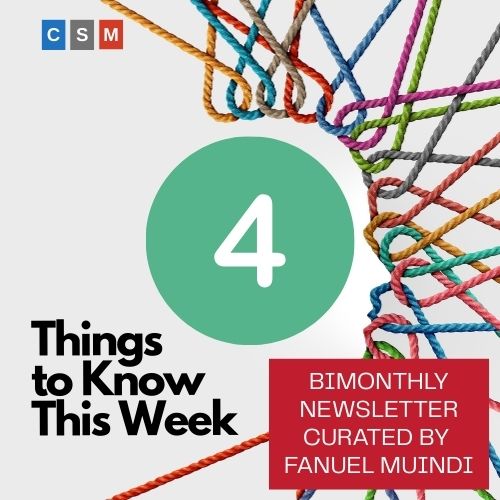CivicSciTimes - Stories in Science
This Is Not The Way Beyoncé Made It Look
Bianca Jones Marlin: “I came to realize that my connection with my daughter, who’s now two-and-a-half years old, isn’t punctuated moments of oxytocin release. It’s our life together.”

Bianca Jones Marlin
[su_boxbox title=”About”]Dr. Bianca Jones Marlin is a neuroscientist and postdoctoral researcher at Columbia University in the laboratory of Nobel Laureate Dr. Richard Axel, where she investigates transgenerational epigenetic inheritance, or how traumatic experiences in parents affect the brain structure of their offspring. She holds a PhD in neuroscience from New York University, and dual bachelor degrees from St. John’s University, in biology and adolescent education. As a graduate student, her research focused on the vital bond between parent and child, and studied the use of neurochemicals, such as the “love drug” oxytocin, as a treatment to strengthen fragile and broken parent-child relationships. Her research has been featured in the Los Angeles Times, The Guardian, Scientific American, and Discover Magazine’s “100 Top Stories of 2015.” She aims to utilize neurobiology and the science of learning to better inform both the scientific and educational community on how positive experiences dictate brain health, academic performance, and social well-being. She will be starting her own lab at Columbia University at the Zuckerman Institute in the departments of Psychology and Neuroscience in 2021. This story was edited by Emily Sherman. Cover image from Pixabay.[/su_boxbox]
[dropcap]I[/dropcap] have a PhD in attraction. I should clarify. Specifically, my doctoral studies looked at the molecule that regulates the laws of attraction: oxytocin. You may have heard of it – colloquially, it is referred to as the love drug. It is released from our bodies during certain things that foster communication and connections, such as holding hands, eye contact, orgasms, and all the way to uterine contractions and milk breastfeeding. It helps foster these relationships. During my PhD, I studied how oxytocin changes a very particular type of attraction: the attraction of a mother to her child.

Bianca Jones Marlin, PhD
Oxytocin also has a synthetic, pitocin. Some say you can buy it on Amazon to bolster your sex life. (Don’t buy it on Amazon.) However, you’ll also find it in hospitals as it is used to speed up labor and induce birth.
I looked at virgin mice during my PhD work. We call them virgins, but their sexual history is their own business; virgin just refers to the fact that they have not given birth or have been pregnant. These virgins will hear the sound of a baby mouse crying and either ignore it and leave it to die — or they’ll eat it.
But, after this virgin mouse finds its true love, builds its white picket fence, and gets pregnant, it will no longer cannibalize or leave baby mice to die. Instead, it will take care of crying pups. This urge and attraction is so strong that the mouse will even take care of pups that aren’t its own, and will take care of pups into old age. I revealed that when I added oxytocin to virgins, even without them ever having babies, they would do the same task and take care of the pups. Oxytocin really made bad moms into good moms, and bad babysitters into pretty solid babysitters.
This is pretty close for me in my life, because I was blessed enough to be raised by two parents who are also foster parents, so I had foster siblings. I saw my siblings being loved in my family, even though my parents didn’t birth them from their body. They birthed them from their heart. To see that oxytocin could save the day in that matter really inspired me to dive into my studies.
Then I got pregnant. In my mind, I had this all painted out. I was going to be sitting with flowers behind me, like Beyoncé. I was going to have my husband rub oils like organic geranium on my feet. My sisters are going to fan my hair as a rite of passage, and of course I was going to have a five-hour labor, because anything less than that you can’t brag about. It’s five-hour labor. I was going to give an all-natural birth, no medication. And my child will come out and we’ll both sing. Then I’d be walking in the halls and through Central Park and I’ll just flip out my breast and breastfeed my baby underneath the willows, because of oxytocin bonding time. I had it all planned out.
When I went to my obstetrician-gynecologist, who was also at NYU at the time, and I told her this is what my plan was, she laughed in my face.
“But I won awards about oxytocin!” I explained. She responded, “You are going to want Pitocin (the synthetic analog), because you’re going to want this baby to get out.” I was very firm in not wanting Pitocin. I wanted to see oxytocin operate in real time. I had dedicated so much of my life to setting this molecule. It was my turn to get it to work for me.
She said I can do whatever I see fit, but she recommends Pitocin. And deep down inside, I thought, that’s a dare. I was in competition with the lady who’s going to be delivering my baby, which is less than ideal.
Nonetheless, Saturday morning came around and I had my first labor pain. It was the same Saturday that I had signed up for an eight-hour Lamaze class for birthing and how to give birth but, whatever. Oxytocin, I got this, right?
We had our labor pains. My husband and I walked around. He took pictures of me in labor. We bought champagne. We made sure the bag was packed. We put the timer on, because in five hours, I was going to have a kid.
Twenty-four hours later, I was still pregnant and in labor.
I thought, What is happening? This is not the way Beyoncé made it look.
We got an Uber, jumped into the car and pulled up at NYU. Although I was thirty hours in labor, I thought, I’m here at NYU. I met oxytocin here, I met my husband here, now I’m going to have my baby here. I took a picture and we got into Labor and Delivery.
At this point, I’m exhausted. Every time a labor pain comes I just put myself into the zone where I’m pulling my head back and thinking to myself, You’re great. It’s okay. You can do it. It’s great. Oh, my gosh, it’s almost over. It’s still two minutes. It was a whole intense thing.
My doctor comes up to me and says, “Bianca, you’re two centimeters dilated.” I was going through something called prodromal labor which gives you some labor benefits, like labor pains, but not other benefits, like dilation.
Thus, we went back home in a yellow cab, because the only other option I had was to take Pitocin to initiate the labor, and I was still in competition with the doctor.
At this point I haven’t slept in two days. I’m pacing in my hallway like a junk zombie. And that night, my husband fell asleep since he’s been up for two days, and I still had to track all of my labor pains. I tracked it at 2:00, 2:05, 2:10, 3:15, all the way to 6:00.
Oxytocin was failing me, after I dedicated so much of my life to studying it. It felt like I was in labor for longer than I was pregnant.
Day four rolls around, and I was determined to finally give birth. I rushed back to NYU and got situated in a room. I officially knew it was time when I looked up and twenty medical students walked in since I gave birth in a teaching hospital. I gave birth in the same teaching hospital I got my PhD in, so I recognized some of those faces. And I did not care.
I gave birth to a healthy baby daughter. Her name is Sage. They took her out and put her on me for skin-to-skin contact, because that releases oxytocin. I’ve been having oxytocin released for four days, so when they put her on my chest, the first thought that came to my mind was, Get this slimy thing off of me. Oxytocin.
But I knew that I was going to mommy right and so I made sure I breastfed her, did skin to skin, since I wanted to have oxytocin released at all these moments. And six weeks in, after mommy-ing correctly, I woke up to a migraine that was worse than my four days of labor pain. My husband rushed me to the hospital and they immediately admitted me because my blood pressure was through the roof.
I came to realize that my connection with my daughter, who’s now two-and-a-half years old, isn’t punctuated moments of oxytocin release. It’s our life together. And oxytocin operates in a myriad of interactions, from the doctor who convinced me to stay and saved my life to my friends who were supportive when I left the hospital and couldn’t breastfeed anymore because my milk had dropped. I realized that every tear I shed when I was in the pump room and I only saw dribbles of milk come out that weren’t going to support my baby, and every time I had to work late and couldn’t be with her, and every time my heart broke for that — that was oxytocin. It was there the whole time.
As scientists we have a certain way of making sure things are clean and experiments are proper, but that’s not the way life is. We can’t always predict the outcome. What I did learn, though, is that Mother Nature will never leave us hanging. She is a mother, after all.
Metrics
Sessions
Total number of Sessions. A session is the period time a user is actively engaged with the page.
Visitors
Users that have had at least one session within the selected date range. Includes both new and returning users.
Page views
Pageviews is the total number of time the article was viewed. Repeated views are counted.
The CS Media Lab is a Boston-anchored civic science news collective with local, national and global coverage on TV, digital print, and radio through CivicSciTV, CivicSciTimes, and CivicSciRadio. Programs include Questions of the Day, Changemakers, QuickTake, Consider This Next, Stories in Science, Sai Resident Collective and more.

-
Civic Science Times2 months ago
ScienceWriters2025 conference is actively seeking new venues, sponsors, and partners. Read their statement to explore ways to help.
-
CivicSciTV - Questions of the Day2 months ago
Part time bartender & scientist, JP Flores, talks about new funding to support a community engagement project in North Carolina
-
Civic Science Times1 month ago
New survey explores what people in South Africa expect of publicly visible scientists – why it matters
-
CivicSciTV International1 month ago
Aquatic ecologist & Scicomm In Practice Fellow, Fridolin Ubald Dossou-Sognon, shares his experience





















